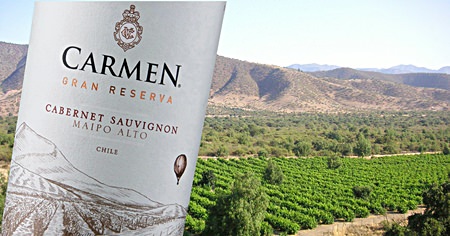If like me and the dogs, you buy wine regularly, it’s possible that you have come across the occasional duff bottle. It shouldn’t happen often but when you open one you’ll get a mouldy whiff of wet newspapers, damp cement or at its worst, rotting vegetables. This condition can be caused by several problems including bad transportation, inappropriate storage, over-heating or a faulty cork. The cork can sometimes become infected by a compound with the alluring name of 2,4,6-trichloroanisole (or TCA for short). It occurs naturally and it’s produced by microbes that live the cork bark. At lower levels, TCA merely masks the wine’s flavour but at high levels, it gives wine a powerful musty aroma which is downright unpleasant.
Fifteen years ago, it was estimated that up to ten percent of all wines were affected by so-called cork-taint. These days it affects only between one and two percent of wines and as more bottles of wine are fitted with synthetic cork closures or screw caps, cork taint has become much less of a problem. Incidentally, you may sometimes notice a faint sharp smell when you open the bottle. It’s sulphur dioxide, a chemical used during the wine-making process. Sometimes it collects in the top of the bottle but usually dissipates within seconds. These days, the chances of buying a really bad bottle are small, especially if the outlet has a brisk turn-over.
 One of the Carmen brands (Background photo: Beatrice Murch)
One of the Carmen brands (Background photo: Beatrice Murch)
Remember that almost all wines are made for early consumption and will not improve with age. In fact, the opposite will happen. If you see a supermarket wine older than about three or four years, it’s safer to leave it alone. Only yesterday I tentatively opened a bottle of Côtes de Rhône which someone had recently bought for me. It was a 2009 vintage and already dangerously old. The first sniff confirmed the sad news that the wine was over the hill and half way to Cambodia. The rich aromas and flavours of a Southern Rhône were already a memory and the poor old thing had become a pale shadow of its former self.
Carmen Cabernet Sauvignon 2011 (red), Chile (Bt. 529 @ Foodland)
I was immediately attracted to this wine because Carmen is George Bizet’s most famous opera. In case you are unfamiliar with the work, it has nothing to do with cars, as I once thought as a teenager. The plot instead revolves around a gipsy girl who works in a cigarette factory in nineteenth century Seville. Viña Carmen is Chile’s oldest wine brand and over the years it has acquired vineyards in Chile’s top wine regions. It was founded in 1850 by Christian Lanz, who incidentally named the winery after his wife, whose name was also Carmen. In case you’re wondering, the winery came first because the opera wasn’t written until 1875. This wine is an inviting dark ruby-red wine with oily “legs” that appear inside the glass when you swirl it around. There’s a rather classy aroma, typical of the rich reds that are coming out of Chile these days. You’ll probably notice dark fruit, brambles and herbs. The aroma reminded me of a Merlot because at first sniff, they can sometimes seem remarkably similar. But then, almost as a second thought, the characteristic Cabernet smells of sweet black and red fruit come through with cherries, blackberries and plums.
This smooth-tasting wine is perfectly balanced with an attractive flavour of ripe black fruit, a refreshing touch of acidity and a pleasing framework of firm tannin. It’s totally dry and verging on full-bodied with a long, satisfying finish. It’s quite assertive too and strikes me as very much a food wine. Rich red meat dishes, steak, roasts and casseroles would probably work well and possibly even game. If you’re going to have pasta or pizza, save this for something else, because it will overpower light dishes. I always feel that pizza and pasta taste their best with Italian wines, but there again; I am sometimes a bit old-fashioned. This wine comes with a hefty 13.5% alcohol content but if you like rich, powerful and fruity reds, you’ll probably find a lot to enjoy in this.
Los Tilos Cabernet Sauvignon 2013 (red), Chile (Bt. 508 @ Big C Extra)
This very dark purplish-red wine has a vibrant aroma of cherry, plum and blackberry. I thought I could pick up a delicate reminder of mint in the background too. Further sniffs revealed a faint tang of white pepper and possibly paprika, though I wouldn’t lay too much money on the paprika. But you know, Cabernet Sauvignon is like that. It can come up with some of the most surprising aromas including seaweed, menthol, tea leaves and sometimes even moist tobacco leaves.
Despite its dark and slightly ominous appearance, the wine turns out to be surprisingly soft and delicate. It’s medium-bodied with an attractively velvety mouth-feel and although it’s on the dry side, it doesn’t come anywhere near the toe-curling class. You’ll taste plenty of rich, ripe berry fruits, possibly hints of vanilla and tobacco but there’s no discernable acidity and hardly any tannin. There’s also that pleasant “blossoming” sensation in the mouth and an attractive long, fruity finish.
At just 12.5% alcohol, it’s a pleasant easy drinker and because of the lack of tannin, the wine would work well with many Indian and Thai curry dishes. Because of various quirks of chemistry beyond my understanding, tannic wines and curries don’t work together. It would make a good partner for red meat dishes too. If you like your reds fruity and easy-going, give this one a try. In case you’d forgotten, or possibly never knew, Los Tilos (TEE-loss) means “The Limes”.
And by the way, if you are unlucky enough to be served a glass of oxidized or otherwise duff wine in a bar, you can politely ask to see the container from which it was poured. The chances are that it came from a three-litre flask which has been standing half-full for the previous few days.




